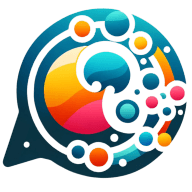5 Best Customer Service Trainings and their Impact
Discover the transformative power of top-notch customer service trainings curated with insights from industry leaders. These programs, designed to elevate every customer interaction, harness expert strategies from solution-focused communication to proactive personalization. Delve into the collective wisdom that can revolutionize the way businesses engage with their clientele.
- Implement Solution-Focused Communication
- Provide Personalized Storage Solutions
- Encourage Customer Feedback Loops
- Focus on Empathy and Problem-Solving
- Prioritize Personalization and Proactive Communication
Implement Solution-Focused Communication
The best customer service training that we implemented was a solution-focused communication program that emphasized active listening, empathy, and problem-solving. Great customer service isn't just about answering questions, it's about anticipating needs and creating trust. This training has helped our team handle complex loan inquiries with confidence, ensuring borrowers feel heard and supported throughout the entire loan process.
By incorporating realistic scenarios and role-playing exercises, we saw faster issue resolution, higher customer satisfaction, and stronger client retention. Investing in training that prioritizes human connection makes all the difference in building lasting customer relationships.

Provide Personalized Storage Solutions
One of the best customer service training programs we've implemented at Carson City Storage focuses on understanding the customer's unique storage needs and providing personalized solutions. Storage isn't just about renting a unit--it's about solving a problem, whether that's helping a business manage inventory, giving a family extra space during a move, or providing Burning Man attendees a safe place to store their festival gear.
A valuable training approach we've used is scenario-based customer service training, where our team practices handling real-life storage situations. For example, we go through role-playing exercises where a customer is unsure what size unit they need, is stressed about a last-minute storage need, or has concerns about security. By working through these situations, our team learns how to actively listen, ask the right questions, and offer the best possible solutions.
What made this training especially effective was our focus on empathy and education. Instead of just answering questions, we train our staff to guide customers through their options, explain the benefits of features like temperature control for sensitive items, or discuss security measures that set our facility apart. This approach builds trust and often leads to repeat customers and referrals.
Additionally, ongoing training on digital tools and customer convenience features has been key. Since we offer online reservations, bill pay, and smart gate entry, it's important that our staff can assist customers who may not be as familiar with these technologies. By ensuring our team is well-versed in both in-person and digital customer service, we've created a seamless experience that makes storage with us easy and stress-free.
Overall, this customer-first approach ensures that every person who walks through our doors--whether they're storing a boat, business inventory, or Burning Man supplies--gets the best possible experience.

Encourage Customer Feedback Loops
A simple yet highly effective strategy I've implemented in a small business context was the focus on customer feedback loops. For a local cafe we advised, we introduced a system where every customer was encouraged to provide feedback on their experience. This was done through quick, accessible methods like QR codes linked to a short survey on their tables, and incentivizing feedback with a chance to win a monthly draw for a free meal.
This strategy was impactful because it provided real-time insights into customer satisfaction and areas for improvement. For instance, feedback led to menu adjustments that better catered to local tastes, resulting in increased repeat business. The cafe saw a 20% increase in returning customers and a noticeable improvement in customer satisfaction scores.
This approach works well because it's straightforward to implement and can provide invaluable insights into customer preferences and expectations. It also demonstrates to customers that their opinions are valued and considered, fostering loyalty and engagement.

Focus on Empathy and Problem-Solving
Personally, the best customer service training I've implemented was for a niche women's fashion retail client. We focused on empathy, active listening, and problem-solving. This training was extremely valuable because it not only improved customer satisfaction rates dramatically, but also enhanced our team's communication skills, creating a more harmonious work environment. I believe customer service extends beyond the customer and influences the entire company culture.

Prioritize Personalization and Proactive Communication
Our customer service revolves around personalization and proactive communication. We prioritize responding quickly, listening carefully, and customizing our services to meet each customer's needs. One example of going above and beyond was when a customer expressed frustration about a delayed service delivery. Instead of just offering a standard apology, I took the time to reach out, explain the cause of the delay, and offer them a complimentary strategy session to make up for the inconvenience. This personal touch solved the issue and turned a potentially negative experience into a long-term relationship. By prioritizing empathy and responsiveness, we've built strong, lasting customer loyalty even online.


